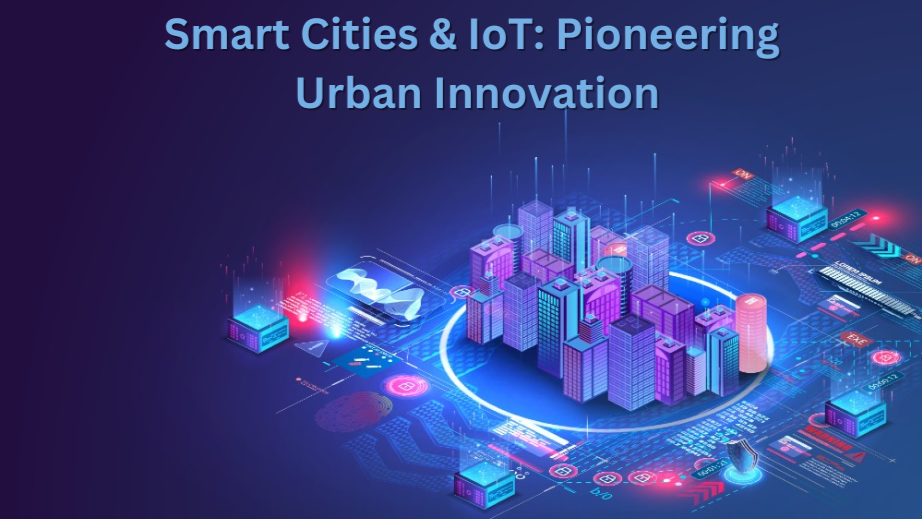As the global population continues to grow and urbanize, cities are under pressure to evolve into more efficient, sustainable, and interconnected ecosystems. Enter smart cities, a concept driven by the Internet of Things (IoT), which connects devices, infrastructure, and people to create a seamless urban experience.
From optimizing traffic flow to improving energy consumption, smart cities promise to redefine urban living. Here’s how IoT is playing a pivotal role in this transformation.
1. What Are Smart Cities?
Smart cities leverage technology and data to enhance the quality of life for residents while ensuring sustainability and efficiency. The core of a smart city lies in its interconnected systems, which communicate via IoT devices.
By collecting and analyzing real-time data, cities can automate processes, anticipate challenges, and make data-driven decisions. This approach not only improves public services but also empowers citizens to actively participate in shaping their communities.
2. IoT Applications in Smart Cities
The Internet of Things is the backbone of smart cities. Here are some key areas where IoT is making a difference:
a. Smart Transportation
IoT-enabled traffic sensors, GPS systems, and connected vehicles help optimize traffic flow, reduce congestion, and minimize carbon emissions. Real-time updates on public transportation schedules and ridesharing services further enhance urban mobility.
Example: Smart traffic lights that adjust based on traffic density, reducing wait times and fuel consumption.
b. Energy Efficiency
IoT devices like smart meters and sensors allow cities to monitor energy usage, reduce waste, and transition to renewable energy sources.
Example: Streetlights equipped with motion sensors that dim when no one is around, conserving energy.
c. Waste Management
IoT-based waste bins equipped with sensors can notify sanitation teams when they’re full, ensuring timely collection and reducing unnecessary trips.
Example: Smart bins in Amsterdam that use data to optimize garbage collection routes.
d. Water Management
Smart sensors can detect leaks in water pipelines, monitor water quality, and optimize irrigation systems in urban green spaces.
Example: IoT systems in Singapore’s Marina Barrage monitor water levels to prevent flooding.
e. Public Safety
IoT-powered surveillance cameras, emergency response systems, and disaster management tools enhance urban safety and resilience.
Example: Smart surveillance systems in Barcelona that use AI to detect unusual activity and alert authorities.
3. Benefits of IoT in Smart Cities
a. Sustainability
By optimizing resource usage and reducing waste, IoT contributes to the sustainability goals of smart cities. This is especially critical as climate change accelerates.
b. Cost Savings
Automating city operations through IoT reduces operational costs, from energy consumption to waste collection.
c. Improved Quality of Life
From reduced commute times to cleaner air, IoT-driven smart cities enhance urban living standards.
d. Data-Driven Decisions
IoT devices provide cities with actionable insights, enabling leaders to make informed, proactive decisions.
4. Challenges in Implementing IoT in Smart Cities
Despite its potential, IoT adoption in smart cities faces several hurdles:
- Data Privacy: With increased data collection, safeguarding citizen privacy is paramount.
- Cybersecurity Risks: IoT devices are vulnerable to hacking, posing risks to critical city infrastructure.
- High Initial Costs: Implementing IoT systems requires significant investment, which may be a barrier for developing cities.
- Interoperability Issues: Different IoT devices and platforms need to seamlessly integrate, which can be challenging.
Addressing these challenges will require collaboration between governments, technology providers, and citizens.
5. The Future of IoT in Smart Cities
As IoT technology advances, the potential for smart cities continues to expand. Here are some emerging trends:
- 5G Connectivity: Faster, more reliable internet will unlock new IoT applications and improve device communication.
- AI Integration: Artificial intelligence will enhance the decision-making capabilities of IoT systems, enabling predictive analytics.
- Sustainable Cities: IoT will play a key role in achieving net-zero carbon goals through smarter energy and waste management.
- Citizen-Centric Solutions: Future smart cities will prioritize user-friendly IoT applications that directly benefit residents.
Conclusion
The integration of IoT into urban planning and management is transforming cities into smarter, more sustainable places to live. While challenges remain, the benefits of smart cities—from enhanced public services to reduced environmental impact—far outweigh the hurdles.
By embracing IoT, cities can not only meet the demands of a growing population but also create a better, more connected future for everyone.
